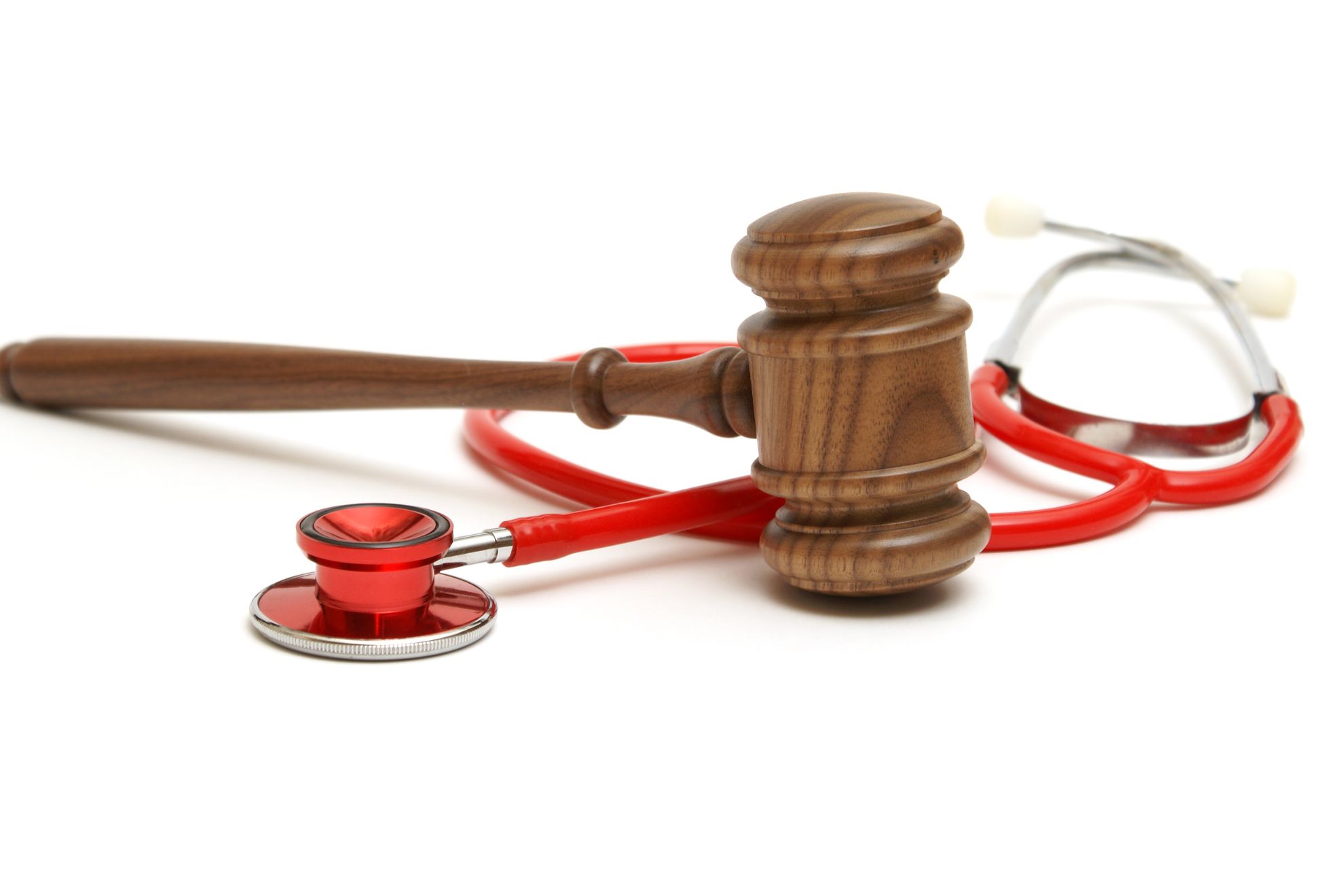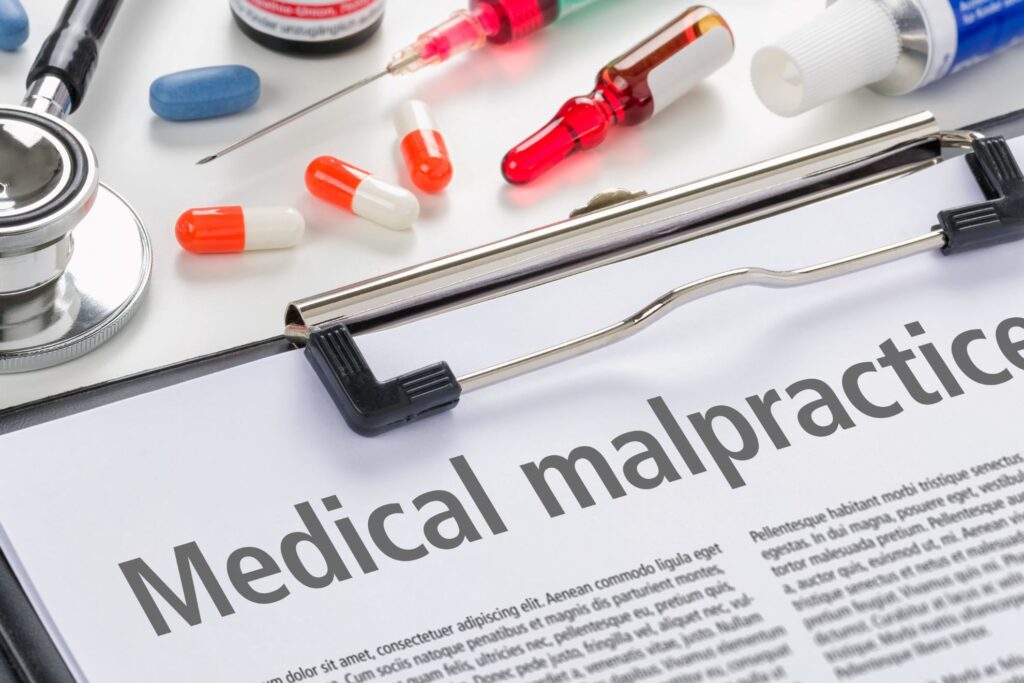Medical lawsuits, often referred to as medical malpractice lawsuits, are legal actions brought against healthcare providers for injuries or damages caused by their negligence. These lawsuits arise from a wide range of medical issues, including improper diagnosis and treatment, surgical errors, medication errors, and birth injuries. It is imperative for patients to be fully aware of their rights and healthcare providers to understand medical laws to avoid any problems.
The litigation process for medical lawsuits can be complex and lengthy, requiring a thorough understanding of both medical and legal principles. Patients need to attest and provide evidence about the healthcare provider breaching the SOPs and for the harm they have caused.
Nevertheless, healthcare providers will have to bite the bullet in case of negligence. The possible consequences can include medical license being revoked or suspended, financial compensation and most importantly, the reputational damage which is why emphasis is laid upon the need for vigilance in maintaining quality patient care.
Understanding Medical Lawsuits
Medical lawsuits, mainly medical malpractice lawsuits, are pursued to claim compensation for a healthcare provider’s carelessness towards their patient.
We will discuss a few types of medical malpractice cases before diving into the nuances of medical lawsuits.
Types of Medical Malpractice Cases:
- Misdiagnosis or delayed diagnosis
- Surgical errors
- Medication errors
- Anesthesia errors
- Birth injuries
You must take into account the key factor when filing a medical malpractice lawsuit, timing. It is of great significance due to the statute of limitations, it refers to the time window within which a person can file a lawsuit. The statute of limitations for medical negligence varies from state to state. Since it is crucial to comply with these time limits, you must consult with a well-informed and refined attorney to carry forward the legal procedures.
A few of the states along with their respective statute of limitations are listed below.
| State | Statute of Limitations |
| California | 3 years |
| Florida | 2 years |
| New York | 2.5 years |
| Texas New Jersey Massachusetts Hawaii Washington Pennsylvania Nebraska | 2 years 2 years 3 years 2 years 3 years 2 years 2 years |
A point worth noting for the victims is that only a small percentage of medical malpractice lawsuits go to trial, as many cases get dropped or dismissed before reaching this stage. For those cases that do proceed, the majority result in a favorable outcome for the defendant healthcare professional.
Navigating the complex landscape of medical lawsuits requires a solid understanding of the legal principles involved. Victims of medical malpractice must establish key elements in their lawsuit, including proving that the healthcare provider owed a duty of care, breached that duty, and caused harm to the patient. The guidance and assistance of an experienced legal counsel can effectively establish these elements and pursue compensation for the damages.


Key Elements in Medical Malpractice
The process of pursuing a medical malpractice lawsuit can be protracted as they are comparatively a knotty legal procedure. The four key elements that a plaintiff must prove to successfully establish a case are as follows.
1. Duty: In any medical malpractice case, it must be established that the healthcare provider owed a professional duty to the patient. This typically means that there was a recognized doctor-patient relationship, and the doctor had a responsibility to provide care according to established medical standards.
2. Breach of Duty: Once the duty element is established, it becomes necessary to prove that the healthcare provider failed to fulfill their obligations by not adhering to the standard of care required. This could include incorrect diagnoses, prescription errors, surgical mistakes, or a failure to monitor a patient’s condition.
3. Causation: The causation element requires the plaintiff to demonstrate and justify that the healthcare provider’s breach of duty directly resulted in harm or injury to the patient. Essentially, the patient must prove that their suffering or worsening of their condition was a direct result of the provider’s negligence.
4. Damages: Finally, damages refer to the quantifiable losses experienced by the patient as a result of the medical malpractice. This can take into account both actual economic loss and noneconomic loss, such as pain and suffering.
Although, pursuing a medical malpractice lawsuit can be consuming and distressing as well but your right choice can save you from big hassle and complicated legalities. Hence, you must consult with a seasoned attorney to handle your case well.
Types of Medical Lawsuits
Surgical Errors
Surgical errors are a common type of medical malpractice lawsuit and occur when a surgical team fails to provide a reasonable level of care during a surgical procedure, leading to patient harm. These errors might include operating on the wrong body part, leaving a surgical instrument inside the patient, or causing damage to nearby organs. For example, cosmetic surgery errors can lead to a valid medical malpractice claim if the patient suffers harm as a result.
Misdiagnosis
When a medical professional incorrectly diagnoses a patient, the patient might receive improper treatment, leading to further harm. A misdiagnosis can occur if the medical professional fails to thoroughly examine the patient, misinterprets test results, or fails to order necessary tests. In some cases, the consequences of a misdiagnosis can be serious, as certain injuries and damages may result from faulty treatment.
Pharmacy Mistakes
Pharmacy mistakes can lead to serious harm and potential lawsuits. When a pharmacist dispenses the wrong medication, provides an incorrect dosage, or fails to warn about drug interactions, the patient may suffer significant, life-threatening consequences. In these cases, patients may seek compensation through product liability claims, which focus specifically on prescription drug and medical device issues.
Nursing Home Neglect
Nursing home neglect is a particularly heartbreaking type of medical lawsuit. When nursing home staff fail to provide proper care, their actions can result in serious injury or even death for vulnerable elderly patients. Some common allegations in nursing home neglect lawsuits include:
- Inadequate supervision, leading to falls and other accidents
- Failure to provide proper nutrition and hydration
- Ignoring or failing to treat medical conditions
- Physical, emotional, or sexual abuse perpetrated by staff members
Nursing home neglect cases often involve complex legal and medical issues, making them challenging for patients and their families to pursue on their own. However, there are resources available to help guide them through the process.
The Litigation Process
Discovery Phase
During the Discovery Phase of a medical malpractice lawsuit, both parties gather relevant information and evidence to support their case. This may include requesting documents, conducting interviews, and taking depositions. For instance, medical records, treatment plans, and provider communications are commonly shared during this stage^1^.
Some critical elements of the discovery phase are:
- Document Production: Parties exchange important documents related to the case.
- Interrogatories: Written questions submitted by each party for the other party to answer.
- Depositions: In-person, recorded interviews conducted under oath.
The primary goal during the discovery phase is to gather sufficient information to determine if the case can be settled or should proceed to the trial phase.
Trial Phase
If a case goes to trial, each party will present their arguments and evidence in court. This phase of the litigation process consists of the following steps:
- Opening Statements: Attorneys make introductory remarks, outlining their client’s case.
- Witness Testimony and Cross-Examination: Both parties call witnesses and experts to support their arguments, followed by cross-examination from the opposing side.
- Closing Arguments: Parties summarize their cases and make persuasive appeals to the jury.
- Jury Deliberations: The jury discusses the arguments and evidence and then moves towards determining the outcome.
- Verdict: The final decision of the jury is announced, which can result in an award of damages or a defendant’s acquittal.
As mentioned earlier as well, this legal procedure can be a lengthy based on the complexity of case so it pivotal for both he plaintiff and the defendant to have a clear, concise, and compelling presentation of the evidence in order to persuade the jury of their respective positions
Cases that win at trial tend to have much greater payouts, but it can take several years before any money is paid^2^.


Effects on the Medical Profession
Insurance Premiums
The medical profession is extensively impacted by medical malpractice lawsuits, with one significant aspect being the cost of medical malpractice
Additionally, the type of medical specialty plays a significant role in determining the premium rates. Some specialties have a higher risk of facing medical malpractice lawsuits, resulting in higher premiums. For example, the premiums for obstetricians and neurosurgeons tend to be higher than those of primary care physicians or pediatricians.
Professional Reputation
Another critical effect of medical malpractice lawsuits on healthcare professionals is the potential damage to their professional reputation. Healthcare providers’ credibility and trustworthiness are paramount in the eyes of their patients and peers. A medical negligence lawsuit can tarnish the reputation of a medical practitioner, even if no wrongdoing is ultimately found.
The consequences of a damaged reputation may include:
- Loss of patient trust
- Decreased patient referrals
- Difficulty in finding a new job or joining established medical practices
- Loss of medical privileges in hospitals or other healthcare institutions
Moreover, medical professionals involved in malpractice litigation may be reported to the National Practitioner Data Bank, a database that tracks medical practitioners’ malpractice history. This information can be accessed by potential employers, further affecting the professional’s ability to find new job opportunities.
In summary, medical malpractice lawsuits can have a significant impact on healthcare professionals through increased
Patient Rights and Responsibilities
In the realm of medical lawsuits, it has become a necessity to understand the patient rights and responsibilities in a healthcare setting. These rights aim to protect patients, while their responsibilities ensure that they maintain a respectful alliance with their healthcare providers.
Patient rights include receiving clear and understandable explanations of treatment options and courses of action, with consideration of benefits and potential risky outcomes. Furthermore, patients have the right to refuse treatment and make decisions about end-of-life care.
Rights of patients under HIPAA: Under the Health Insurance Portability and Accountability Act (HIPAA), patients have additional rights such as control over their health information. Examples of these rights are:
- Access to medical records
- Requesting corrections to their medical records
- Knowing who has access to their health information
- Reporting concerns about privacy violations
In addition to these rights, patients also have certain responsibilities to uphold during their treatment process. By fulfilling their responsibilities, patients contribute to a mutually respectful alliance between themselves and their physicians, ultimately benefiting their health and well-being. Some of these responsibilities include:
- Seeking care when needed
- Being candid with physicians about symptoms and medical history
- Interacting respectfully with healthcare providers
- Adhering to treatment plans
- Communicating openly and honestly with healthcare professionals
In cases of medical lawsuits, understanding and acknowledging these patient rights and responsibilities is vital. Maintaining this balance not only empowers patients to take an active role in their healthcare, but also helps prevent misunderstandings and conflicts that may lead to legal disputes.
Preventing Medical Lawsuits
In order to prevent medical lawsuits, healthcare professionals must focus on risk prevention and improve their clinical practices. Implementing specific strategies such as effective communication, maintaining detailed documentation, and ensuring patient safety can significantly reduce the likelihood of facing a malpractice claim.
Effective communication plays a crucial role in avoiding misunderstandings and establishing trust between physicians and patients. Doctors should make sure they thoroughly explain diagnoses, treatment options, risks, and possible outcomes. Encouraging patients to ask questions and keeping them involved in the decision-making process can lead to better compliance and satisfaction, thus reducing the risk of malpractice lawsuits.
Another essential element is proper documentation. Physicians should strive to maintain accurate, comprehensive, and legible patient records. This includes documenting agreements with patients, disclosing potential risks, and noting any deviations from standard practices. A well-organized and complete medical record can serve as a strong defense in case of a malpractice claim. In fact, medical documentation issues play a role in 10-20% of medical malpractice lawsuits.
Ensuring patient safety is imperative to minimizing the risk of a lawsuit. Hospitals and clinics must establish systems to identify, analyze, and address potential safety hazards. This could involve implementing electronic health records, promoting teamwork and collaboration, and providing continuous medical education and training for staff. Adhering to evidence-based guidelines can also help in reducing treatment errors.
In conclusion, by focusing on effective communication, thorough documentation, and patient safety, healthcare professionals can significantly reduce the risk of medical lawsuits and contribute to a better patient experience.
Key Takeaways
|
Frequently Asked Questions
What are the common examples of medical malpractice?
Medical malpractice can occur in various forms. Common examples include misdiagnosis, delayed diagnosis, surgical errors, medication errors, anesthesia errors, and birth injuries. These errors can lead to severe consequences for the patient, such as worsening of their condition, unnecessary suffering, or even death.
How does a medical malpractice lawsuit process work?
The process of a medical malpractice lawsuit usually begins with the plaintiff filing a complaint against the healthcare provider. The plaintiff needs to establish that the healthcare provider had a duty of care which they breached, and it caused harm to the patient. The case then proceeds to the discovery phase, where both parties gather evidence. If the case does not settle out of court, it may go to trial, where a judge or jury will decide the outcome.
What are the consequences for doctors involved in malpractice?
The doctors who are found guilty of medical malpractice can be penalized financially. In addition to that, they can face loss of reputation and potential disciplinary actions from medical boards or licensing organizations and even suspension of their medical license.
Which medical specialties face the highest number of lawsuits?
Some medical specialties have a higher risk of medical malpractice lawsuits than others. These areas may include surgery, obstetrics and gynecology, internal medicine, and radiology. Factors contributing to the elevated risk in these specialties include diagnostic complexity and the potential for severe patient outcomes.
What qualifies as medical malpractice?
If a healthcare provider has been negligent and because of that caused harm to a patient, they will be accounted for medical malpractice. Failure to meet the established standard of care while treating a patient, resulting in injury also qualifies as medical malpractice.However, the plaintiff must prove the healthcare provider’s negligence.
How can healthcare professionals protect themselves from malpractice allegations?
In order to protect themselves from malpractice allegations, it is necessary that healthcare professionals implement a strong risk management strategy and stay current with medical advances.They can also mitigate the risk by maintaining and updating their knowledge base, adhering to evidence-based practices, establishing open communication with patients, managing patients’ expectations, and ensuring comprehensive documentation of patient interactions and treatment decisions.
If you have been a victim of a healthcare provider’s negligence and are thinking of filing a legal claim to receive the compensation you deserve then, do not worry anymore. Our team of seasoned attorneys will assist you during this difficult time period. We associate you with the proficient legal experts who will fight for your rights, provide guidance through the legal process, and tirelessly advocate for the compensation you deserve. Contact us today to begin your journey of justice!



